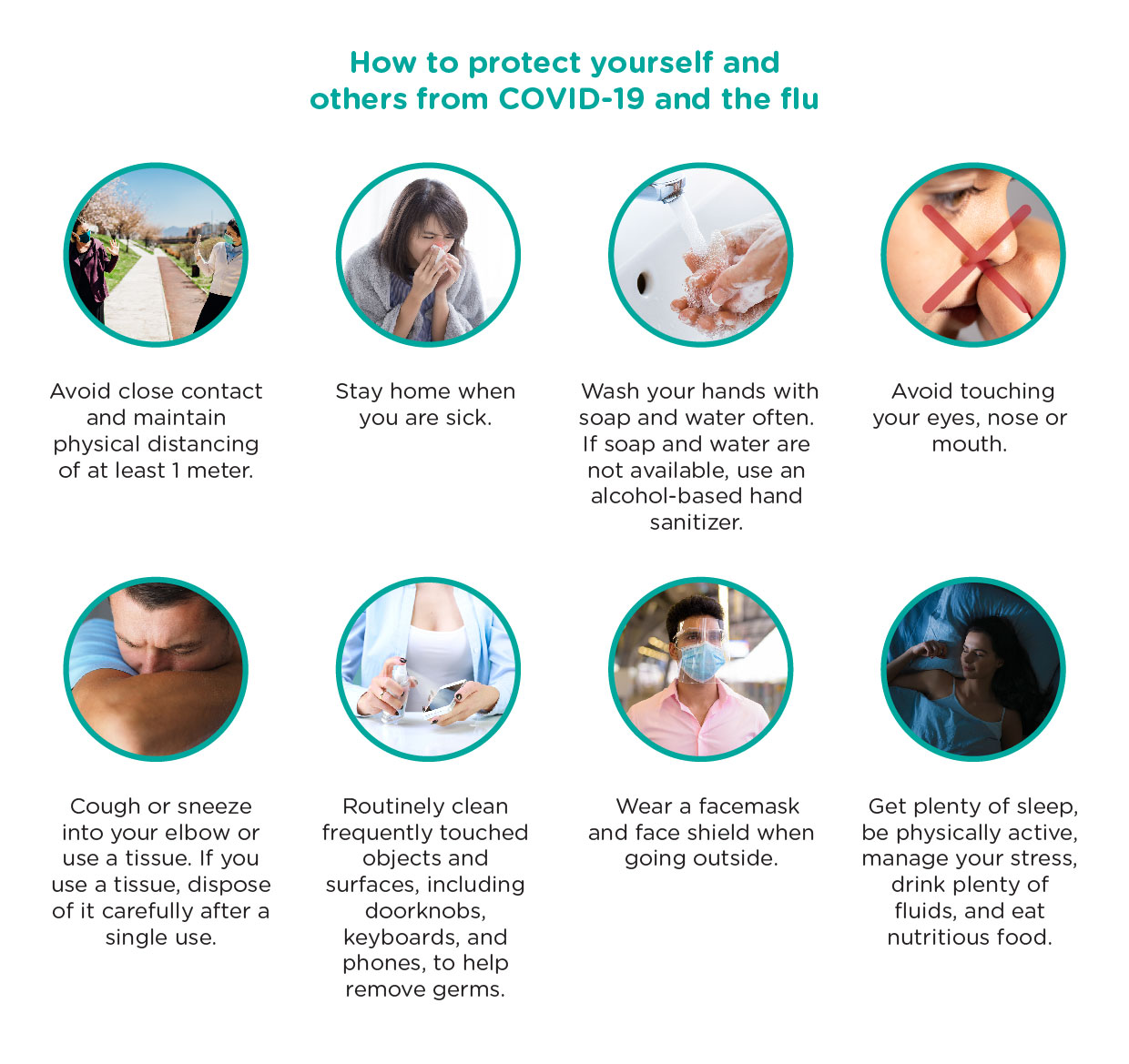
The flu and COVID-19 are both contagious respiratory illnesses. However, there are important differences between the two viral infections.
COVID-19 has one unique symptom not found in the flu: change in or loss of taste or smell. Both COVID-19 and flu can have varying degrees of signs and symptoms, ranging from no symptoms (asymptomatic) to severe symptoms. Common symptoms that COVID-19 and flu share include fever, cough, shortness of breath or difficulty breathing, fatigue (tiredness), sore throat, runny or stuffy nose, muscle pain or body aches, headache, vomiting, and diarrhea. If you experience these symptoms, consult a doctor on the appropriate steps to take.
COVID-19 symptoms take longer to appear than those of the flu. A person typically develops flu symptoms anywhere from 1 to 4 days after infection. A person usually develops COVID-19 symptoms 5 days after being infected. However, COVID-19 symptoms can appear as early as 2 days after infection or as late as 14 days after infection. Consult a doctor if you experience flu-like symptoms or symptoms associated with COVID-19.
A person with COVID-19 may remain contagious longer than someone with the flu. Most people with flu are contagious for about 1 day before they show symptoms. Older children and adults with flu appear to be most contagious during the initial 3-4 days of their illness but many remain contagious for about 7 days.
It is possible for people with COVID-19 to spread the virus for about 2 days before experiencing signs or symptoms and remain contagious for at least 10 days after signs or symptoms first appeared. If someone is asymptomatic or their symptoms go away, they may remain contagious for at least 10 days after testing positive for COVID-19.
The death rate (mortality) for COVID-19 appears higher than for flu, especially seasonal flu. While the true mortality of COVID-19 will take some time to fully understand, current data so far indicate that the crude COVID-19 mortality ratio (the number of reported deaths divided by the reported cases) is between 3-4%. For seasonal flu, mortality is usually well below 0.1%.

Shop at Watsons for anti-flu over-the-counter medicines and other essential healthcare products.
References: https://www.cdc.gov/flu/symptoms/flu-vs-covid19.htm. Accessed 10 September 2020 https://www.who.int/emergencies/diseases/novel-coronavirus-2019/question-and-answers-hub/q-a-detail/q-a-similarities-and-differences-covid-19-and-influenza. Accessed 11 September 2020 https://www.cdc.gov/flu/prevent/actions-prevent-flu.htm. Accessed 18 September 2020 https://www.ecdc.europa.eu/en/covid-19/facts/questions-answers-prevention. Accessed 18 September 2020
Overweight and obesity are defined as abnormal or excessive fat accumulation that presents a risk to health. A body mass […]
Around 27 million Filipino adults are overweight or obese, according to the latest National Nutrition Survey conducted by the Food […]
Advances in scientific and technological knowledge have provided unprecedented advantages in terms of immeasurable convenience in our daily living, lightning-fast […]